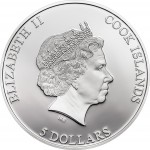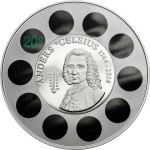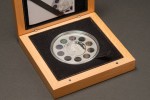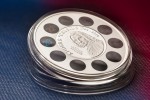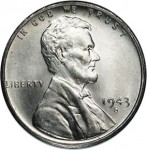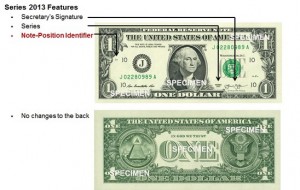December 2020 Numismatic Legislation Review
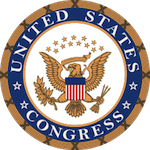 The U.S. Mint is unique because it is the only mint in the world to be controlled by a legal process that requires the government to coordinate its policy. While other mints have requirements to clear specific actions with their parliament or legislative bodies, the U.S. Mint cannot do anything without an act of congress, including changing coin designs.
The U.S. Mint is unique because it is the only mint in the world to be controlled by a legal process that requires the government to coordinate its policy. While other mints have requirements to clear specific actions with their parliament or legislative bodies, the U.S. Mint cannot do anything without an act of congress, including changing coin designs.
Congress’s micromanagement of the U.S. Mint is their interpretation of Article I Section 8 of the United States Constitution that says, “The Congress shall have Power… To coin Money, regulate the Value thereof, and of foreign Coin.” It does not say that congress must micromanage the U.S. Mint, nor does it say that congress has to be involved in the design.
Although commemorative coin programs require legislation, over the last 20 years, congress considers these bills as time-fillers when other business does not require their attention. Most of the commemorative coin bills rarely receive a hearing in their committees and usually pass by unanimous consent. These bills are handled to show the general public congress is doing something while brushing it off like dandruff on their shoulders.
With congress putting off difficult negotiations until after elections, the lame-duck session becomes the dumping ground for hard negotiations, usually about spending money and fluff. While congressional leaders negotiated the hard stuff, congress meets and passes bills that have little meaning to the general public. Most numismatic bills have little meaning for the general public. However, passing these bills gives them something to talk about.
Let’s look at the five bills that congress acted on in December:
- H.R. 1830: National Purple Heart Hall of Honor Commemorative Coin Act
Sponsor: Rep. Sean P. Maloney (D-NY)
LAST ACTION: Signed by the President and became Public Law No: 116-247. — Dec 22, 2020
Initially introduced in the House in March 2019, the bill creates a 2022 commemorative coin program to support the National Purple Heart Hall of Honor in New Windsor, New York. The bill was heard during the cleanup, and the lame-duck session finally passing on December 2. president signed the bill on December 22, 2020.
- H.R. 1923: Circulating Collectible Coin Redesign Act of 2020
Sponsor: Rep. Barbara Lee (D-CA)
Passed the House of Representatives — Sep 22, 2020
Passed the Senate with amendments — Dec 17, 2020
LAST ACTION: Message on Senate action sent to the House. — Dec 18, 2020
Initially, this bill was called the Women’s History and Nineteenth Amendment Centennial Quarter Dollar Coin Program Act. Somewhere along the line, congress changed the title. This bill will create a new quarters series to honor women from each state involved with suffrage and the Nineteenth Amendment. The bill was passed by the lame-duck Senate and awaits the president’s signature.
Even though this bill passed the House and Senate, the Senate amended the bill. The House has to agree with the changes, or the bill must go to a Conference Committee to work out the differences. Since the House has not acted on the amendment, the bill is likely to die when congress adjourns sine die on January 3, 2021.
Adjourning sine die, or without a date, is the final adjournment of congress. It will be the formal close of the 116th congress. The 117th congress gaveled in for their first day of business today, on January 3, 2021, as required by the U.S. Constitution.
- H.R. 4104: Negro Leagues Baseball Centennial Commemorative Coin Act
Sponsor: Rep. Emanuel Cleaver (D-MO)
LAST ACTION: Signed by the President and became Public Law No: 116-209. — Dec 4, 2020
This law authorizes a 2022 commemorative coin program to honor the centennial establishment of the Negro Leagues. The surcharges from the coin sales will benefit the Negro Leagues Baseball Museum in Kansas City.
- H.R. 6192: 1921 Silver Dollar Coin Anniversary Act
Sponsor: Rep. Andy Barr (R-KY)
Passed the House of Representatives — Sep 22, 2020
Passed the Senate with amendments — Dec 17, 2020
LAST ACTION: Presented to President. — Dec 24, 2020
The bill that has been all over the numismatic media will allow the U.S. Mint to strike 2021 Morgan and Peace dollars. Congress sent the bill to the president on December 24, 2020. It is waiting for his signature. Constitutionally, he has ten days to act on the bill. Since these are calendar days, January 2, 2021, is the tenth day.
If congress was in session on January 2, the bill becomes law without the president’s signature. If congress adjourned sine die, then the bill is the victim of a pocket veto. There is an indication that congress is still in session discussing updates to the recent COVID-19 stimulus package.
- H.R. 7995: Coin Metal Modification Authorization and Cost Savings Act of 2020
Sponsor: Rep. Mark E. Amodei (R-NV)
Passed the House of Representatives with amendments — Dec 2, 2020
LAST ACTION: Received in the Senate and Read twice and referred to the Committee on Banking, Housing, and Urban Affairs. — Dec 3, 2020
The House rushed to pass this bill because it allows them to look like they did something. The Senate did not consider this bill and will allow it to die when congress adjourns. It is a bad bill and should die with the end of this congress.
When the 116th Congress adjourns for the final time, any legislation not passed will be considered dead. The slate is wiped clean, and the 117th Congress starts anew. It could be something to look forward to in 2021!
Cook Island thermometer coins
Celsius was a Swedish physicist, mathematician and a professor of astronomy at Uppsala University. As one of Sweden’s premier scientists of his day, Celsius traveled extensively to research ways to measure degrees from the poles in order to improve mapping and navigation. He believed that by studying the stars we could learn more about the composition of the earth and its origins, something we are still doing today.
The research he is most known for was as the first scientist to experiment with temperature in order to define a definitive scale to be used by all scientists as the basis for their experiments. In 1742, Celsius published the paper Observations of two persistent degrees on a thermometer where he defined 100 as the freezing point of water and 0 as its boiling point with a scale of units in between. He called his scale “centigrade” derived from the Latin for “hundred steps.”
Independently, physicist Jean-Pierre Christin of France developed a similar scale with 0 as the freezing point of water and 100 as its boiling point. In 1743, Christin commissioned the building of the “Thermometer of Lyon,” a mercury thermometer based on his research.
Celsius died in 1744 at the age of 42 from tuberculosis. A year after his death, colleague Carolus Linneaus, a botanist interested in the effects of temperature on growing plants, reversed Celsius’ scale and improved on the design for the thermometer. In a paper published in 1745, Linneaus first used the Celsius to describe the temperature scale. He later convinced the Royal Swedish Academy of Sciences to change the name of the scale to Celsius in memory of his late colleague.
To honor Celsius, the Cook Islands hired Coin Invest Trust of Balzers, Liechtenstein to design and strike a coin to honor Andres Celsius. The coin with a 5 Dollar face value will 50mm in diameter and proof struck using one troy ounce of .925 silver. Mintage will be limited to 1744 pieces.
The coin’s unique reverse design will include a thermometer that will be integrated around the center of the coin that will feature the portrait of Anders Celsius. Based on the images, the thermometer looks like it will be based on the same technology as those used in temperature strips. The area where the portrait will be features a little degree mark before the C in Celsius, the date 1744-2014, and a small depiction of a thermometer.
Since Cook Islands are under the sovereignty of New Zealand and New Zealand is a member of the Commonwealth Realm, Queen Elizabeth II is the legal head of state and appears on the obverse of the coin. The portrait is by British sculptor Ian Rank-Broadley whose work appears on all coins of the Commonwealth Realm.
- Obverse of the 2014 Cook Island Anders Celsius NCLT features the Ian Rank-Broadley image of Queen Elizabeth II.
- Reverse of the 2014 Cook Island Anders Celsius NCLT features a portrait of Celsius surrounded by a working thermometer.
No announcement has been made as to when it will be available and the purchase price.
Given my resistance to gimmicks on coins (with my own admitted hypocrisy), there is still something compelling about the proposed design for this non-circulating legal tender (NCLT) coin. I will wait to see how much the coin will cost before making a commitment one way or the other.
- An image of how the 2014 Cook Island Anders Celsius NCLT coin presentation case.
- An image of how the 2014 Cook Island Anders Celsius NCLT coin will look in its presentation case.
- An image of how the 2014 Cook Island Anders Celsius NCLT coin will look in its holder.
Coin images courtesy of Coin Invest Trust
U.S. Mint gives more time to comment on alternative metals
You can read my previous posting about this here.
Even though the U.S. Mind does not define who its stakeholders are, I believe that collects are part of the stakeholder community and should be heard. If you do comment, the U.S. Mint is looking for input on the following factors:
- Costs to convert to circulating coins composed of alternative metals given the following possible changes to coins:
- Weight
- Electromagnetic signature
- Visual changes, such as color and relief
- Transition time needed to introduce a circulating coin composed of an alternative metal.
- Comments on how best to inform and educate both affected industries and the public on changes to circulating coins.
- Environmental impact from the use of circulating coins composed of alternative metals.
- Other issues of importance not identified above.
When commenting, note that the U.S. Mint said it is not considering aluminum alloy metals.
Comments may be sent by email to Coin.StakeholdersResponse@usmint.treas.gov. If you prefer to send your comments the traditional way, mail them to Coin Stakeholders Response, Office of Coin Studies, United States Mint, 801 9th Street NW., Washington, DC 20220.
If you do comment and would like to share what you said with the rest of the community, either send it to me via email or post it as a comment below.
D-Day + 70 years
Operation Overlord was the largest amphibious invasion in history.
Originally scheduled on May 1, it was rescheduled to June 5 and then June 6 because of weather.
Commanded by Gen. Dwight D. Eisenhower, the invading force consisted of 156,000 Allied troops using 5,000 ships and landing craft bringing on shore 50,000 vehicles with overhead support from 11,000 planes and 13,000 paratroopers.
Across 50 miles of Normandy coast line, the United States forces were assigned Utah and Omaha beaches, the British Army was assigned to Gold and Sword beaches, and the Canadian Army invaded Juno beach.
Operation Bodyguard created six decoy invasions as a distraction to the Germans so as to divert their attention from the intended invasion at Normandy. Gen. George S. Patton, considered the most skillful tank commander in U.S. military history, commanded a fake mission to invade Pas-De-Calais.
Omaha Beach was the focus of the attack because it was the most heavily defended beach.
On the first day, 4,414 Allied soldiers were confirmed dead.
Victory was declared on July 21, 1944 when the Allied forces captured Caen, one of the major objectives of the invasion.
The Normandy American Cemetery in Colleville-Sur-Mer is the final resting place for 9,387 Americans. Across its 172.5 acres sits 9,238 crosses and 149 Stars of David where 41 sets of brothers and 3 Medal of Honor recipients rest. The Walls of the Missing is engraved with the names of 1,557 soldiers missing in action.
On this, the 70th Anniversary of D-Day, the day Operation Overlord began, there is one more statistic that should not exist:
Although the U.S. Mint did issue a World War II 50th Anniversary commemorative coin in 1995, this country should honor those who participated in the largest amphibious invasion in history and set the world on a safer course.
With the number of veterans of that day dwindling as they are all nonagenarians, I would like to thank them for their service and the families of the fallen for their service. I only wish that congress would realize that their bickering over nonsense with flags on their lapels pales in comparison to the sacrifices made on that day in France. They just do not get it.
Coin images courtesy of the Royal Canadian Mint, Royal Mint, and Monnaie de Paris.
Summary of May coin-related bills
S. 2303: United States Coast Guard Commemorative Coin Act
S. 2310: Mother’s Day Commemorative Coin Act
Note that the likelihood of these bills passing is slim-to-none and Slim just left town. Since Sen. Rockefeller is retiring after this session, there is a small chance that Mother’s Day commemorative could be voted on by unanimous consent in December as a legislative “going away present.”
Change for a Dollar
Time has come that there is once again change coming to the money in your pocket. This one is so subtle that you may not even notice the difference.
Last week, the Bureau of Engraving and Printing announced that as part of new cost savings measures, BEP will be producing the $1 Federal Reserve Note using a process that prints 50 notes per sheet rather than the old 32 units. The 50 note sheets will be Series 2013 notes and feature the signatures of the Secretary of the Treasury Jacob J. Lew and Treasurer of the United States Rosa Gumataotao Rios. The ever so slight but significant design change will be to the note-position identifier.For those who do not collect currency, the note-position identifier is the little letter followed by a number that identifies where on the sheet the note was printed. On the $1 FRN, the note position identifier is on the left side of the front of the note under the “1” and next to the Federal Reserve branch number.
On the new 50 note sheets, the note-position identifier will feature a code with both the letter and number the same size. The only way to determine whether the note was printed on a 32-unit sheet or a 50-unit sheet is by looking at the note-position identifier.As part of this change, the BEP is also changing the position identifier code mechanism. On the 32 note sheets, the notes printed four-across and eight-down were divided into four eight-note blocks (or quadrants). Each block was given a number in columns where the top-left quadrant was #1, the bottom left was #2, top-right was #3, and bottom-right was #4. Within the quadrants, the note positions were lettered A-D in the first column and E-H in the second column. If you found a note with the note-position code of H3, the note would have been printed in the fourth row and fourth column of the sheet.
The new 50 note sheets simplifies the note-position numbering by assigning a letter to each of the 10 rows (A-J) and a number to each of the five columns. On this sheet, H3 would now be located on the eighth row and third column.
| A1 | E1 | A3 | E3 |
| B1 | F1 | B3 | F3 |
| C1 | G1 | C3 | G3 |
| D1 | H1 | D3 | H3 |
| A2 | E2 | A4 | E4 |
| B2 | F2 | B4 | F4 |
| C2 | G2 | C4 | G4 |
| D2 | H2 | D4 | H4 |
| A1 | A2 | A3 | A4 | A5 |
| B1 | B2 | B3 | B4 | B5 |
| C1 | C2 | C3 | C4 | C5 |
| D1 | D2 | D3 | D4 | D5 |
| E1 | E2 | E3 | E4 | E5 |
| F1 | F2 | F3 | F4 | F5 |
| G1 | G2 | G3 | G4 | G5 |
| H1 | H2 | H3 | H4 | H5 |
| I1 | I2 | I3 | I4 | I5 |
| J1 | J2 | J3 | J4 | J5 |
BEP has begun to deliver the new notes to the Federal Reserve currency distribution operations in all 12 Federal Reserve district branches. These new notes will enter circulation as per the policies of each branch. BEP has not said whether they will sell the 50-note sheets as part of their uncut currency products.
The $1 FRN is the first note to be printed on 50-note sheets. Over time, the BEP will transition the printing of other notes to 50-note sheets with the only design change being the subtle change in the note-position identifier.
As part of this change, the Federal Reserve created a video explaining the changes. You can watch the video here:


